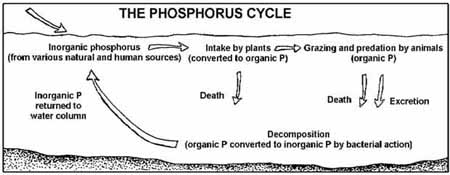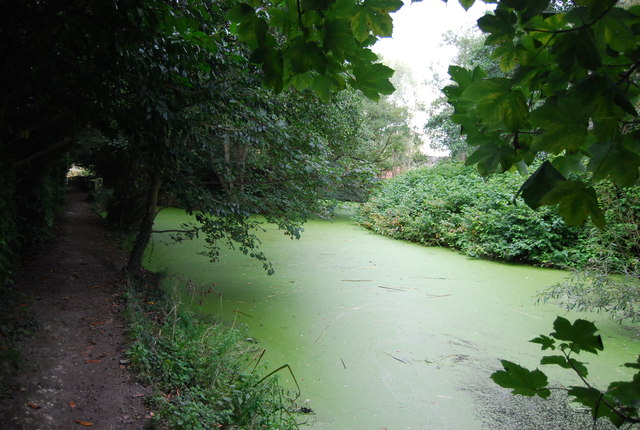Contents
Energy Transfers & Nutrient Cycles
Energy Transfers
In any ecosystem, plants are the producers in a food web as they are able to produce their own carbohydrates using carbon dioxide in the atmosphere or water. Between each trophic level in a food web, the majority of the energy is lost due to respiration and excretion. The remaining energy is used to form the biomass.
The amount of biomass remaining in an organism can be measured in terms of mass of carbon or dry mass of tissue per given area. How productive an ecosystem is depends on the abiotic and biotic factors. Plenty of water, light, warmth, and green plants will maximize the rates of photosynthesis and therefore result in more carbohydrates being produced in the plants. This can be quantified using GPP and NPP. Gross primary production (GPP) is the chemical energy stored in plant biomass, in a given area or volume. It is the total energy resulting from photosynthesis. Net primary production (NPP) is the chemical energy stored in plant biomass taking into account the energy that will be lost due to respiration (R).
NPP = GPP – R
The NPP is the energy left over that is available to the plant to create new biomass and therefore available to the next trophic level in a food web. To work out the net production of consumers (N), such as animals, the formula below can be used:
N = I – F + R
I = the chemical energy stored in ingested food F = the chemical energy lost to the environment in faeces and urine R = respiratory losses.
Rates of productivity are recorded using the units kJ ha–1 year–1. kJ is the unit for energy, but these units also include per unit area and per year. It is recorded as per unit area to standardize the results to enable environments to be compared- it takes into account that different environments will vary in size. The units are also per year to take into account the impact seasons will have on rain, light, and heat – it provides an annual average to allow fair comparisons between environments.
Nutrient Cycles
Nutrients are recycled within natural ecosystems, exemplified by the nitrogen cycle and the phosphorus cycle. Mycorrhizae play an important role in nutrient cycle. Mycorrhizae are fungal associations between plant roots and beneficial fungi. As a result, the fungi entwined around the plant roots provide a larger surface area for water and mineral absorption. The fungi part of the mycorrhizae acts like a sponge and can absorb and hold onto water and minerals surrounding the root. This is of benefit to the plant, as in times of drought the mycorrhizae store of water and minerals can be used. This is a mutualistic relationship because the plant provides the fungi with carbohydrates.
Nitrogen Cycle
Nitrogen is an important element that is needed to create amino acids/proteins, DNA, RNA, and ATP. The cycle is split into four key processes: nitrogen-fixation, nitrification, denitrification, and ammonification.
Nitrogen-fixation
Nitrogen-fixing bacteria are able to break the double bond between the two nitrogen atoms in nitrogen gas in the atmosphere and fix this nitrogen into ammonium ions. The bacteria are either free-living in the soil or it is symbiotic (mutualistic relationship), living in the root nodules of plants. This is common in leguminous plants such as clover and beans.
Nitrification
The ammonium ions in the soil are converted to nitrite and then nitrate ions in the soil by nitrifying bacteria. This is a two-stage oxidation reaction.
Denitrification
This stage is not useful as it returns the nitrogen in compounds back to nitrogen gas in the atmosphere, so it cannot be absorbed by plants. Anaerobic denitrifying bacteria do this.
Ammonification
Proteins, urea, and DNA can be decomposed in dead matter and waste by saprobionts. These are bacteria and fungi that can digest waste extracellularly, this is saprobiotic nutrition, and returns ammonium ions into the soil.
Phosphorus Cycle
Phosphorus is an essential element for life as it is needed to create DNA, RNA, ATP, and phospholipid bilayers. The phosphorus cycle is different from the carbon (not on the specification) and nitrogen cycle because phosphorus is not found as a gas in the atmosphere. Instead, the main store is in sedimentary rocks.
Fertilisers
Fertilisers are added to soil to replace the nutrients lost nitrate and phosphate ions when plants are harvested and removed from the cycle as crops. These fertilisers can be either natural (manure) or artificial fertilisers (inorganic chemicals).
Natural fertilisers are cheaper and often free if the farmer owns animals. However, the exact minerals and proportions cannot be controlled.
Artificial fertilisers are chemicals created to contain exact proportions of minerals. Inorganic substances are more water-soluble, and therefore more of these ions dissolve in the water surrounding the soil. Whilst this is an advantage to the plant for absorbing the nitrates and phosphates, the downside is that their high solubility means that larger quantities are washed away with rainfall and therefore have a greater impact on the environment.
Leaching is when water-soluble compounds are washed away, often into rivers or ponds. If nitrogen fertilisers leach into waterways it causes eutrophication.
Eutrophication is when nitrates leached from fertilised fields stimulate the growth of algae in a pond. The excessive growth of algae creates a blanket on the surface of the water which blocks out light. As a result, plants below cannot photosynthesize and die. Bacteria within the water feed and respire on the dead plant matter. This results in an increase in bacteria, which are all respiring and using up the oxygen within the water. Eventually, fish and other aquatic organisms die due to the lack of dissolved oxygen in the water.
- How could you simplify a food web?
- Your answer should include: trophic levels
- Why would a farmer want to simplify a food web?
- Your answer should include: reduce wasted energy
- What is GPP?
- Your answer should include: gross primary productivity
- What is NPP?
- Your answer should include: net primary productivity
- How is energy lost between trophic levels?
- Your answer should include: Respiration / Faeces / Urine





